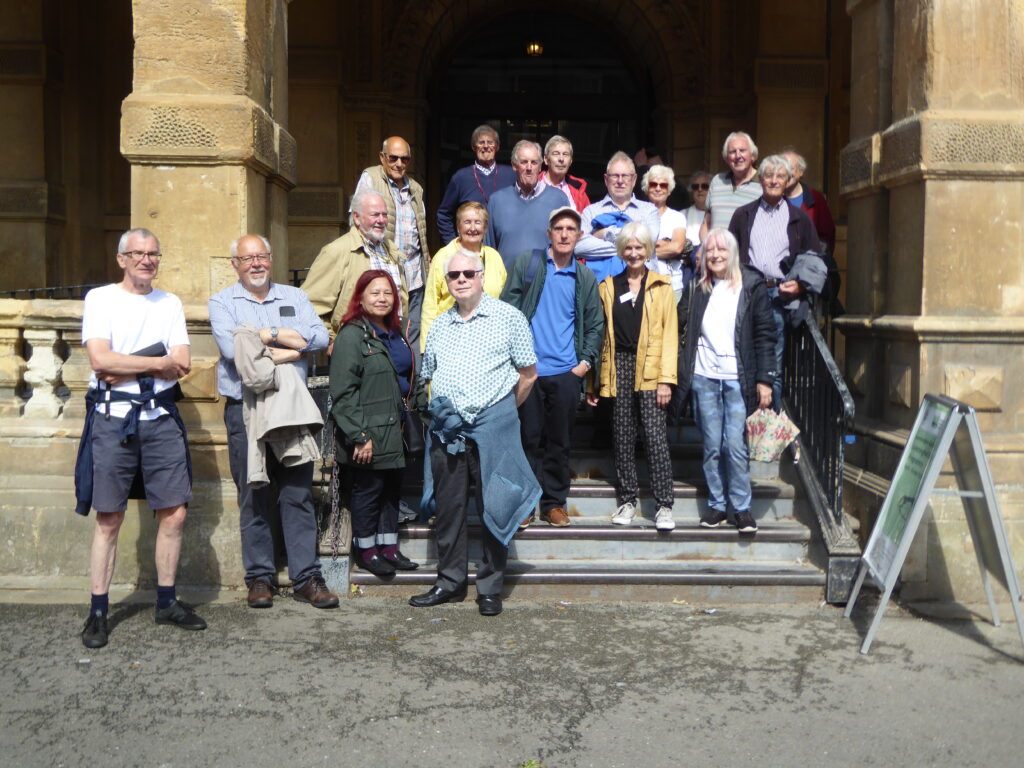
On 12th June 2025, the Coventry Society visited the developing Leamington Cultural Quarter, courtesy of the Leamington Civic Society and the Friends of Leamington Spa Art Gallery.
We met at the Royal Pump Rooms, but unfortunately, we were not able to look at the gallery because of problems with the roof. We were briefed on the history of the gallery, which was established in 1929 and relocated to the Pump Rooms just 25 years ago. The Friends of Leamington Spa Art Gallery and Museum (FLAG) was set up in 1967 and supports the gallery in many ways, including fund raising and facilitating school visits.
Walking to our first site, we were shown a number of sites that had historically been bath houses. In total there had been seven of these in Leamington. Some of us had only been aware of the Pump Room! Most of these dated from the early part of the 19th Century and no longer exist, although we did see one that did and has been recently restored for commercial use.
Mark Brightburn from Warwick District Council explained the cultural strategy to us. In simple terms the strategy provides a linear track through Leamington with nodes of activity that work together to develop a town-wide programme of action. The Creative Quarter will function as a hub for educational initiatives, workshops, and events designed to inspire the next generation of artists and entrepreneurs, fostering a dynamic environment where creativity flourishes and new ideas come to life.
We first visited the Stoneleigh Arms. Despite the name, this is not a pub but new facilities for artists. The original pub, dating back to the 1820s, became derelict and dangerous and could not be saved. The new building which replaces it has been built to the same dimensions and similar materials and styling to the original. It will be used for artists studios, pottery studios and galleries. The work on the building has only recently been completed and it awaits its first tenants.
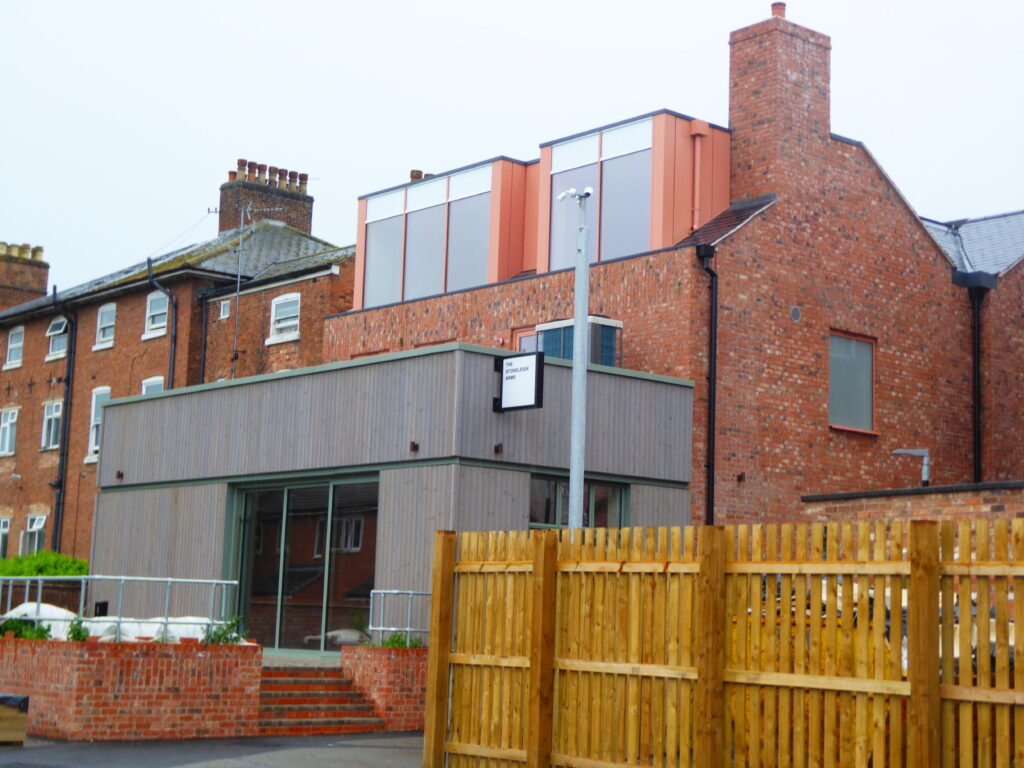
Behind the Stoneleigh Arms is a new Pocket Park, an attractive outdoor area shared by users of Stoneleigh Arms and other buildings that are part of a larger scheme. It was formerly an under-used car park.
The Old School House has been restored, converted and extended to provide a multi-purpose education, arts, and community space. Reinstated arched windows, character brickwork, and new entrances, links to the pocket park and arts hub on the Stoneleigh Arms site. The new extension, now named The Depot, is a stripped-back back space with an industrial feel, light and airy, suitable for many uses. The Old School and The Depot this will be available to any individual or business working in the cultural/creative sectors who can contribute to the delivery of an exciting, vibrant and dynamic new destination in Leamington.
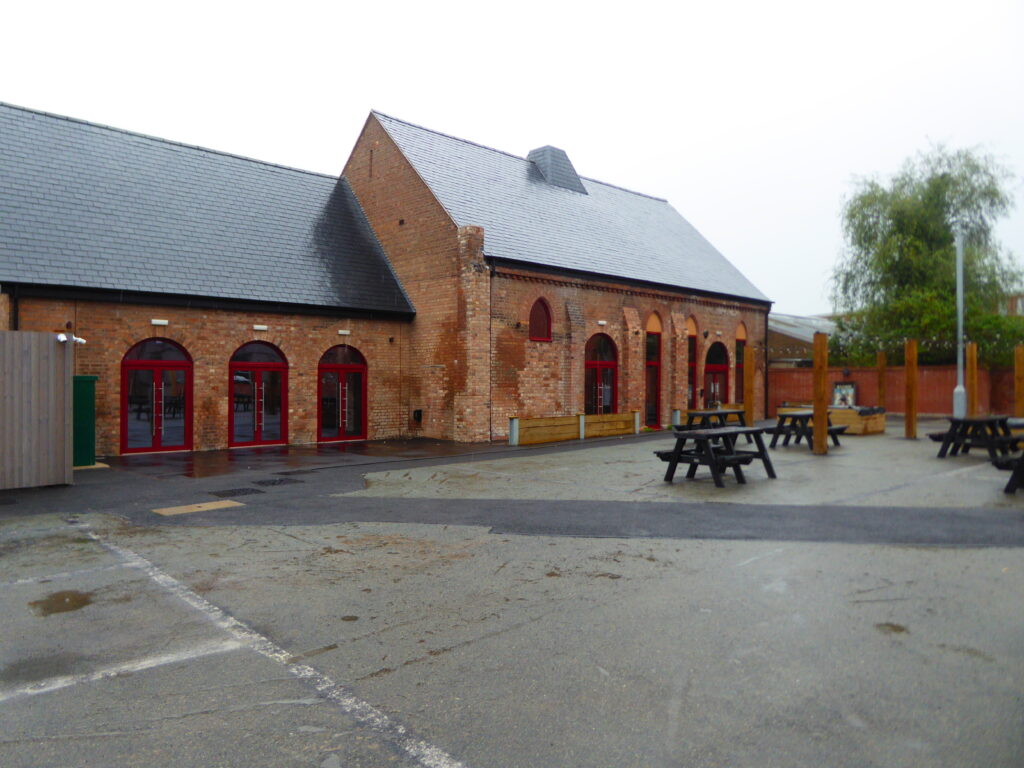
Walking back we were briefed on the vision of the local community in Leamington to create a Leamington High Line, based on the New York project that converted an obsolete railway line into a mile and a half linear park. This community project is focused on celebrating the former London & North Western Railway in Leamington Spa, repurposing the disused viaduct as a community catalyst in Old Town Leamington.
We next visited The Fold. This is a stunningly refurbished former United Reformed Church, that had latterly been used as a carpet warehouse before becoming derelict. The building is on three levels, with the gallery level being used for managed workspace with hot-desking. The ground floor is more informal meeting space and a café, whilst the crypt is used for small personal work and meeting spaces, video, recording and podcast studios. Two large spiral staircases join the three levels together.
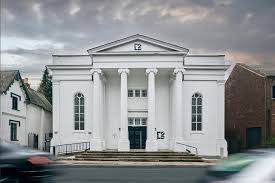
The building was restored by Complex Development Projects Ltd and is managed by Cogent, a digital marketing company.
Behind The Fold, is a public square now called Spencer Yard, occupied by other creative industries, including world famous Motion House. A recent sculpture adorns the square.
Some of the buildings in this area had an interesting history. During the Second World War, they housed artists designing camouflage for factories and infrastructure up and down the country that might be bombed.
We than visited 1 Mill Street, a former Sikh community centre which has been regenerated as a coffee bar / bistro with work units and other facilities for hire.
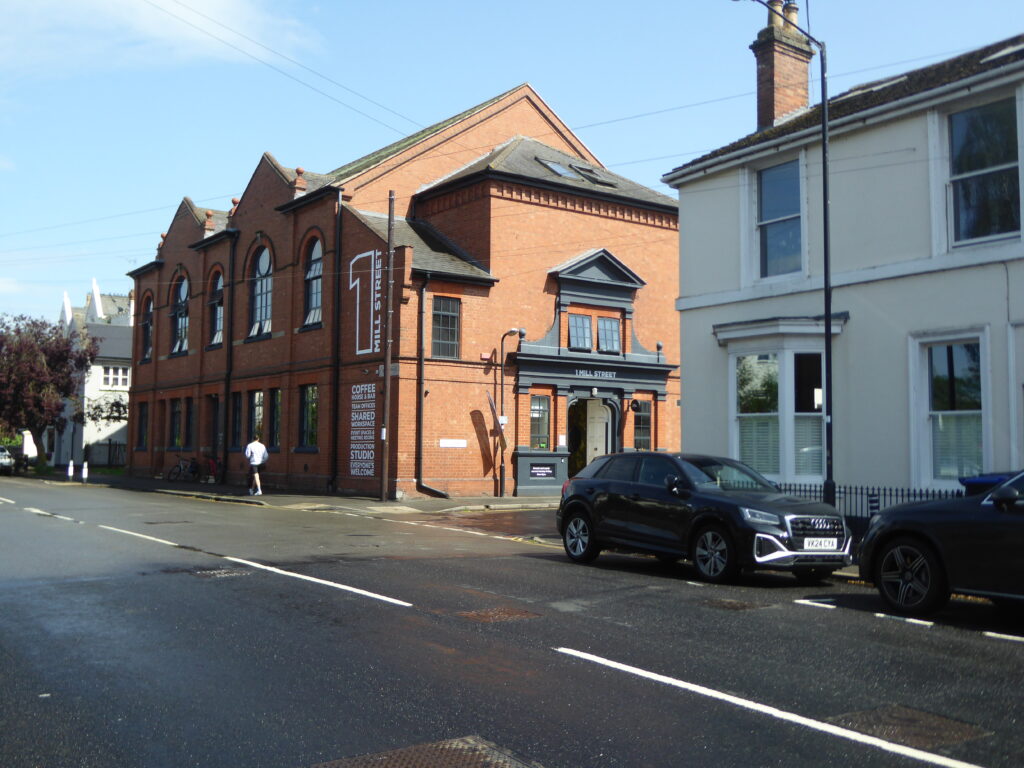
We passed through Jephson Gardens to inspect the new John Bridgeman sculpture relocated there. The sculpture, entitled “unknown refugee”, had previously been in storage and was unveiled in March this year.
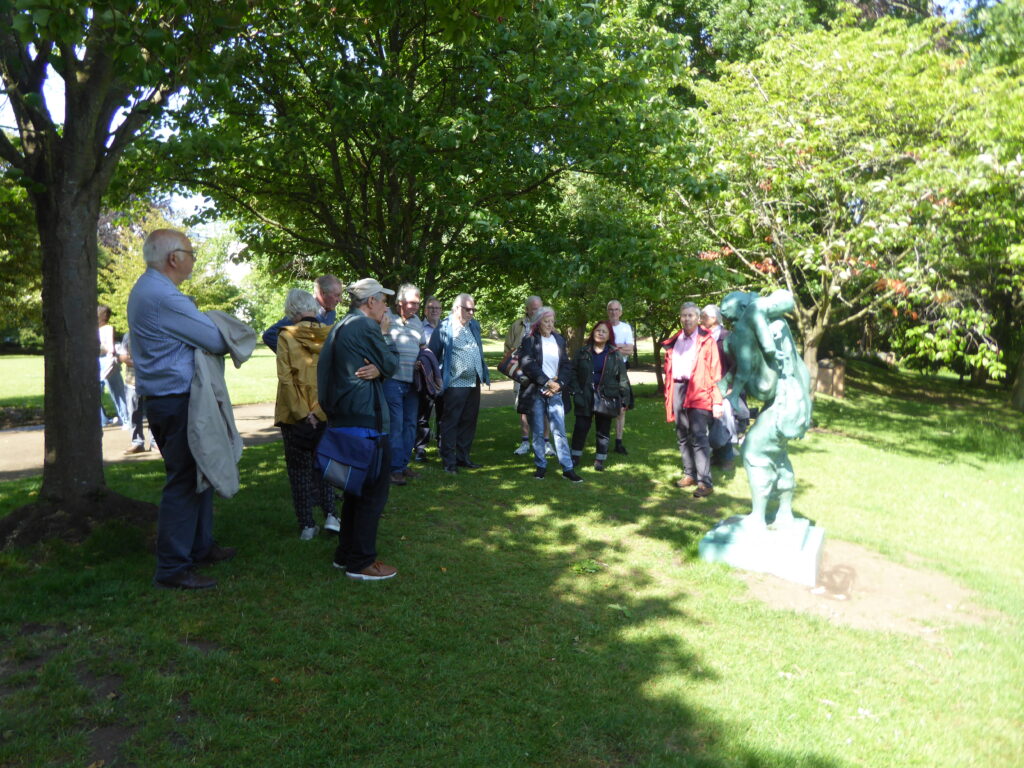
Our finale stop was the Town Hall, dating back to 1884. The council chamber, with its wonderful windows, has been refurnished to permit a wider variety of uses. The Assembly Room is currently in use as rehearsal space for Motion House, but is capable of being used for a variety of uses. The clock tower is currently the home of a family of Peregrine Falcons, as previously reported.
The building has been refurbished to allow it to be hired and used for a wide variety of purposes, whilst continuing to provide its original civic functions.
The Leamington Cultural Quarter is a collaboration between Complex Development Projects and Warwick District Council. It is an ambitious 10-year initiative to transform the Old Town of Leamington Spa into a vibrant Creative Quarter. Funding for the project comes from a variety of sources, including the Government’s Future High Streets Fund. The vision for Leamington is held and overseen by a Leamington Transformation Board, which includes the local civic society.
The Coventry Society is very grateful to the Leamington Society and FLAG for hosting us on this most interesting visit and showing us the excellent work being done in Leamington to create a creative quarter. Our thanks also to the staff of Warwick District Council who demonstrated an excellent approach to working with the local community.
